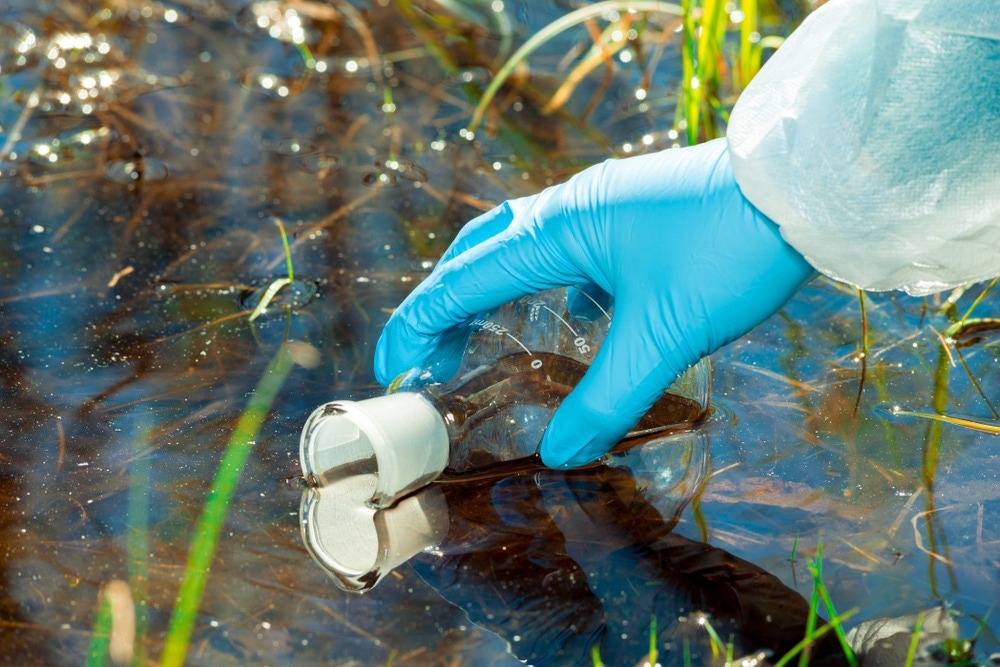The modern world has become reliant on sensors, mainly thanks to their affinity with the growth of the Internet of Things (IoT) and data analytics. Industries including automotive, manufacturing, healthcare, environmental monitoring, consumer electronics, agriculture, space exploration and aerospace, energy, and security utilize sensors and are impacted by developments in this space.
As sensors have become more sophisticated, they have become able to process more complex samples. This ability to analyze complex samples is fundamental to their growing use in applications across industries.
Here, we explore how sensors handle complex samples, including environmental and biological samples.
How Do Sensors Process Complex Environmental Samples?
Sensors process complex environmental samples by detecting and analyzing the sample’s chemical and physical properties. The parameter detected and analyzed will depend on the type of sensor used as well as the nature of the sample.
In air quality monitoring, chemical sensors are used to detect chemical reactions or interactions between specific molecules. This allows them to calculate the concentration of substances within a sample; for example, using this method, sensors can detect and quantify the concentration of a particular pollutant within a sample of air.
Gas sensors are also used in air quality monitoring as they can detect pollutants such as carbon monoxide, carbon dioxide, nitrogen dioxide, sulfur dioxide, and volatile organic compounds.
Particulate matter sensors are used to measure the concentration of PM2.5 and PM20 molecules (exposure to which has been linked to poor health outcomes), in air samples. Particulate matter sensors most commonly work by emitting a light source (e.g. laser or LED) onto a source (e.g. air sample).
As the particles in the source intercept the beam, the light is scattered in various directions. This scatter is detected by a photodetector, which sends signals that are analyzed to measure the changes in the intensity of light scatter. The sensor is then able to spermine the concentration of particulate matter in the air, which is usually produced as an output in terms of micrograms per cubic meter.
Sensors are also widely used to analyze water samples in a wide range of applications, including environmental monitoring, quality control of water supplies, and industrial processes.
The first step in analyzing a water sample with a sensor is to select the appropriate sensor that fits the purpose. There are various types of sensors that can be employed to analyze a water sample, such as those that measure pH, temperature, conductivity, dissolved oxygen, turbidity, chemical contaminants, and microbial contaminants.
Once the appropriate sensor has been selected, a water sample is collected, and the sensor is calibrated and immersed in the sample. The method of measurement depends on the type of sensor. Chemical sensors, for example, use various detection methods, such as optical, electrochemical, and spectrophotometric. pH sensors, on the other hand, measure the hydrogen ion concentration in the sample, whereas conductivity sensors measure the water’s ability to conduct an electrical current.

Image Credit: kosmos111/Shutterstock.com
How Do Sensors Process Complex Biological Samples?
Sensor technology has become increasingly important in processing complex biological samples. Blood, urine, RNA, DNA, proteins, microorganisms, tissues, cells, saliva, and breath can all be investigated with sensors. The way sensors process biological samples varies and depends on the type of sample.
Blood, for example, first requires sample preparation. Often, samples are centrifuged to separate the blood into its components of serum, plasma, red blood cells, and white blood cells. Additionally, anticoagulants are often added to prevent the blood from clotting while it is being analyzed.
The appropriate sensor is then selected depending on what feature of the blood is to be analyzed. Glucose sensors are employed to measure blood glucose levels; they are electrochemical sensors that utilize electrodes that come into contact with the blood to measure the electrical current. The current is generated by enzymatic reactions between glucose and glucose oxidase. Hemoglobin sensors, on the other hand, use pulse oximeters to estimate hemoglobin levels via the analysis of light absorption.
A plethora of sensors are used to analyze DNA. Common tools include polymerase chain reaction (PCR) sensors, which monitor the amplification of DNA sequences during PCR. This allows for the quantification of DNA and the detection of specific sequences of genes.
Electrochemical sensors are also used to detect and measure the electrochemical reactions that occur between DNA and electrodes.
More recently, nanopore-based sensors have emerged as a reliable way to analyze DNA. These sensors detect the changes in electrical current that occur as strands of DNA pass through the nanopore. Such sensors can detect the sequences of DNA bases as they pass through, enabling scientists to gain valuable information about the genetic code.
Summary
A wide range of sophisticated sensors have been developed that can effectively and reliably process complex samples. As technological advancements occur in related scientific fields, it is likely that we will see further developments in sensor technology. The fields of environmental monitoring and medicine/healthcare will benefit from these advancements.
References and Further Reading
Kelly, K.E. et al. (2017) ‘Ambient and laboratory evaluation of a low-cost Particulate Matter Sensor’, Environmental Pollution, 221, pp. 491–500. doi:10.1016/j.envpol.2016.12.039. https://www.sciencedirect.com/science/article/abs/pii/S026974911632718X
Liu, L. and Wu, H.-C. (2016) ‘DNA-based Nanopore sensing’, Angewandte Chemie International Edition, 55(49), pp. 15216–15222. doi:10.1002/anie.201604405. https://onlinelibrary.wiley.com/doi/abs/10.1002/anie.201604405
Wang, Y. et al. (2008) ‘Electrochemical sensors for clinic analysis’, Sensors, 8(4), pp. 2043–2081. doi:10.3390/s8042043. https://www.mdpi.com/1424-8220/8/4/2043
Yaroshenko, I. et al. (2020) ‘Real-time water quality monitoring with chemical sensors’, Sensors, 20(12), p. 3432. doi:10.3390/s20123432. https://www.mdpi.com/1424-8220/20/12/3432
Disclaimer: The views expressed here are those of the author expressed in their private capacity and do not necessarily represent the views of AZoM.com Limited T/A AZoNetwork the owner and operator of this website. This disclaimer forms part of the Terms and conditions of use of this website.